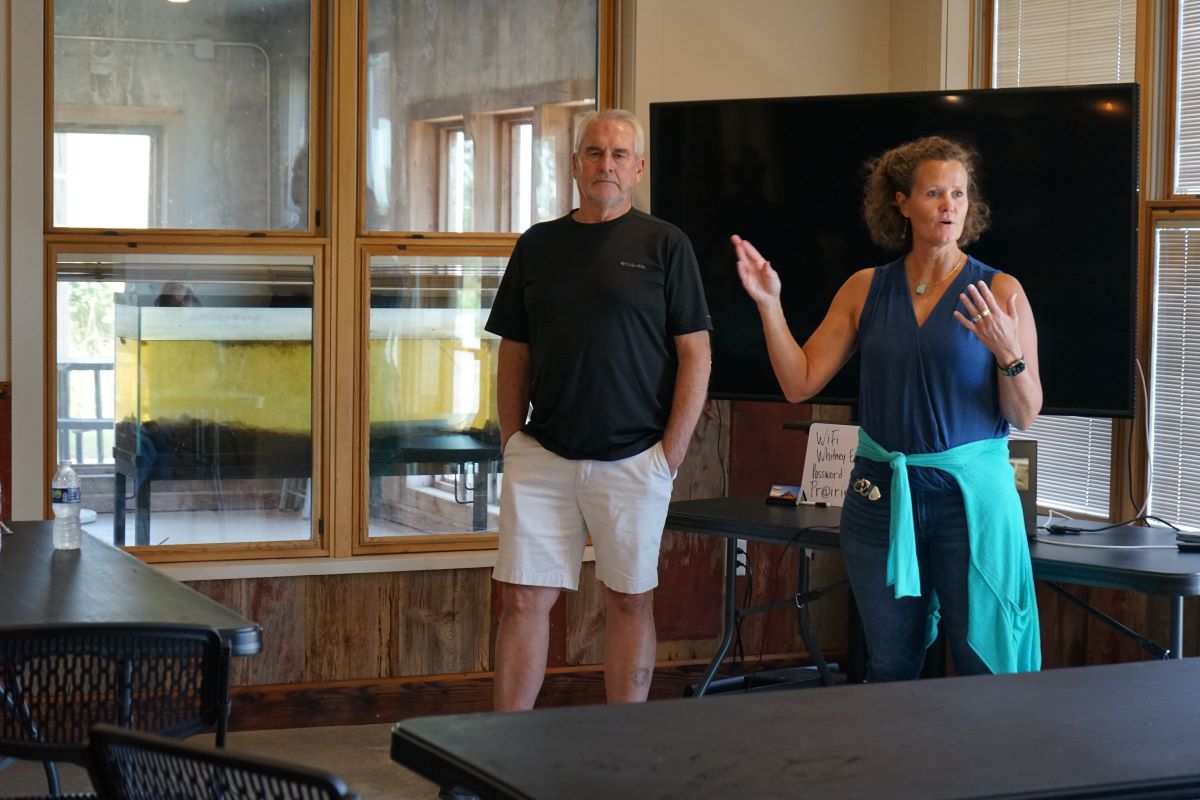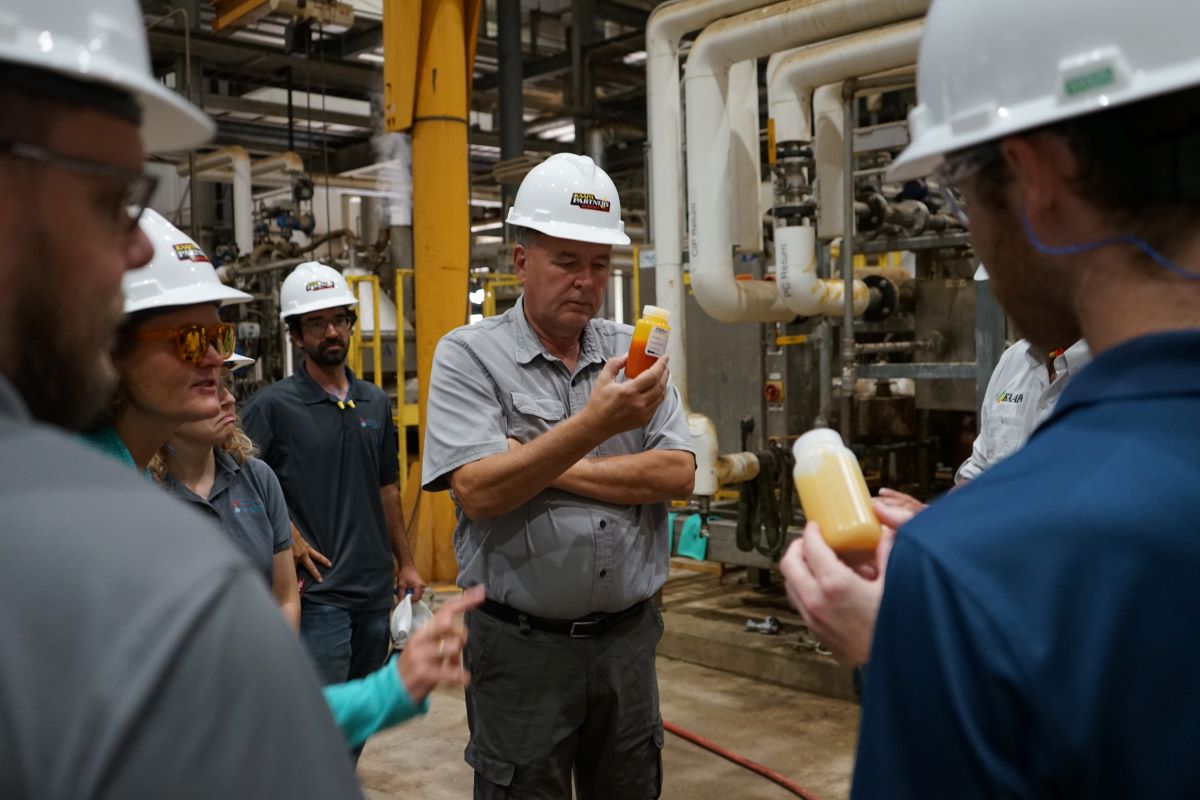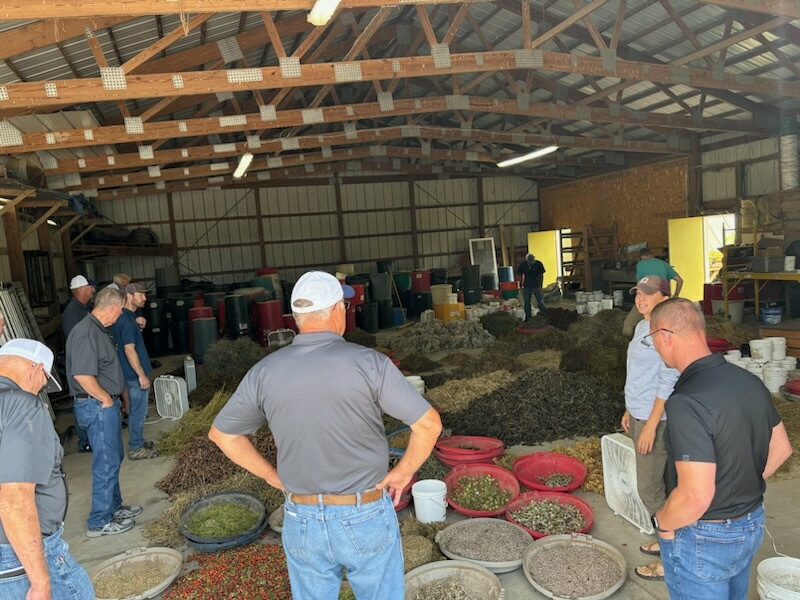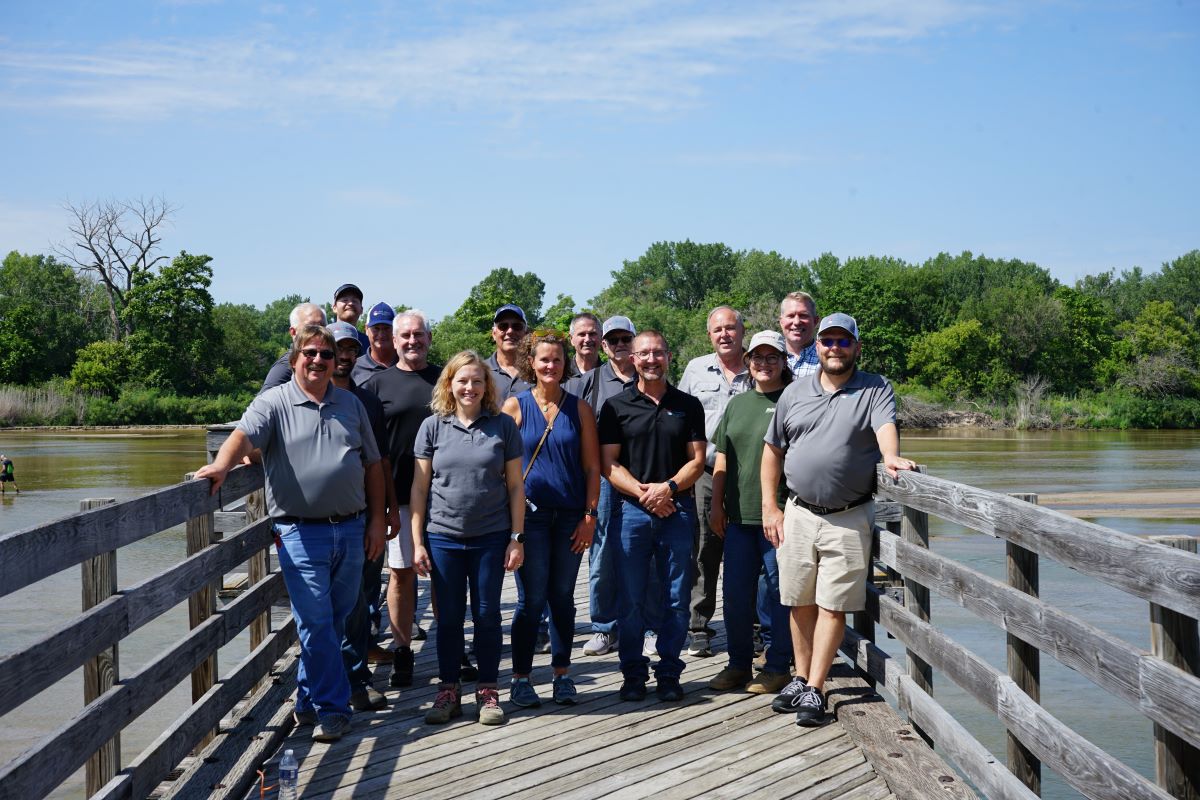Hard Hats and Hair Nets
Upper Big Blue board of directors visit various sites on annual tour
From flood control structures and park improvements to tree plantings and soil health incentives, the board of directors of the Upper Big Blue Natural Resources District is responsible for a great many projects and programs across the nine counties of the district. Viewing some of those projects in-context is the aim of an annual tour that rotates to different quadrants of the district each year. For the 2024 tour, held in August, directors, staff, and guests toured multiple sites in Hamilton County, which is shared between the Upper Big Blue and Central Platte NRDs. The tour was an opportunity for directors to gain a greater understanding of the needs of the constituents they serve and the resources they are entrusted to steward, as well as hear from individuals in different communities about local resource concerns.
“[The tour] was very informative for me as a younger person (and first termer) on the board to see different things around the district,” said Matthew Perry, a director who represents sub-district 8 (York). State Senators Jana Hughes and Dave Murman attended the tour along with NRD directors to learn more about the variety and scope of work Nebraska’s NRDs accomplish. The senators were also on hand to answer questions about the recent legislative special session.

The tour began at the Bremer Community Center in Aurora, with a presentation from Kelsey Bergen, executive director of the Aurora Development Corporation. Bergen told directors about the short- and long-term growth plans for the Aurora area, including new residential and industrial developments. The board of directors has recently been asked to consider water supply and well permits for industrial uses in Hamilton County, so it was useful for directors to learn more about the business community’s vision for growth in the years ahead to understand the broader context of the issues that may arise.
The next stop was the ethanol plant KAAPA Partners Aurora, where directors met with Chuck Woodside, chief executive officer. Woodside discussed how trends in the marketplace toward lower-carbon options for energy favor ethanol production and other green technologies. The group donned hardhats to view how corn moves through the factory in multiple stages of refinement to become alcohol that will eventually be blended with fuel.

Up next was a visit to The Grain Place, near Marquette. There, the group traded hardhats for hair nets as owner David Vetter led a tour of his seed storage and processing facility. Vetter has been farming organically for more than 45 years. Thanks to a nine-year crop rotation that provides an abundance of soil nutrients naturally while also preventing weed and pest problems, Vetter hasn’t added inputs of any kind to his 200+ acres in decades. In addition to growing a variety of grains and legumes, Vetter also works with other organic growers to process their grains and ship them all around the world. Vetter’s soil health efforts were explored in a recent documentary called Dreaming of a Vetter World.
The tour continued to the Whitney Education Center at Gjerloff Prairie, also near Marquette. This facility, operated by the Prairie Plains Resource Institute, provides an opportunity to view Nebraska as it once was—tallgrass prairie. The organization is headquartered in Aurora, but operates eight restored prairie sites across Nebraska, four of which are in the Upper Big Blue NRD area. While there, the NRD tour group visited the seed barn to learn more about how native plant seeds are collected in the wild throughout the year and used to re-establish desirable species. The group heard presentations from Amy Jones and Sarah Bailey about the benefits of native plant communities, which are better able to withstand drought and flooding and that provide high quality habitat for native fauna, including pollinators like bees and butterflies.

While at the education center, directors heard a presentation from Dr. Brandi Flyr, a hydrologist with the Central Platte Natural Resources District. Flyr explained that differences in bedrock, soil, and topography impact agricultural land use in Nebraska. She noted that conditions in the Central Platte are very different than in the Upper Big Blue NRD, and though they are adjacent to each other and the same crops are often grown in each district, management and conservation practices in one NRD do not necessarily apply to the other district. For example, there are no flowmeter or water use reports required in the Central Platte NRD, but there are these management techniques in place in the Upper Big Blue, as groundwater irrigation is more abundant.
The final item on the tour agenda included viewing multiple sites on the Dark Island Trail. The group heard from Jason Buss and Hannah Clark organizers with the Platte PEER Group about the future development of trail and park amenities in the area. The trail runs eight miles from Central City to Marquette along abandoned railways and in the future may link to Aurora. It is managed by volunteers and funded in large part by federal and state grants. Thousands of patrons enjoy walking or biking along the trail each year, making it one of the top attractions in that area. The directors viewed a portion of the trail that is incomplete in the Upper Big Blue NRD, as well as the most heavily utilized part of the trail, the much-photographed Bader Bridge, which spans the Platte River in the Central Platte NRD.
“The thing that was nice was that we visited some place that aren’t directly related to the NRD’s projects, but that are influenced by the NRD,” said Board Chairperson Lynn Yates. “We don’t always know what’s going on across the district for things we aren’t directly involved with, so it’s helpful to see other parts of the district and learn what different organizations are doing.”

